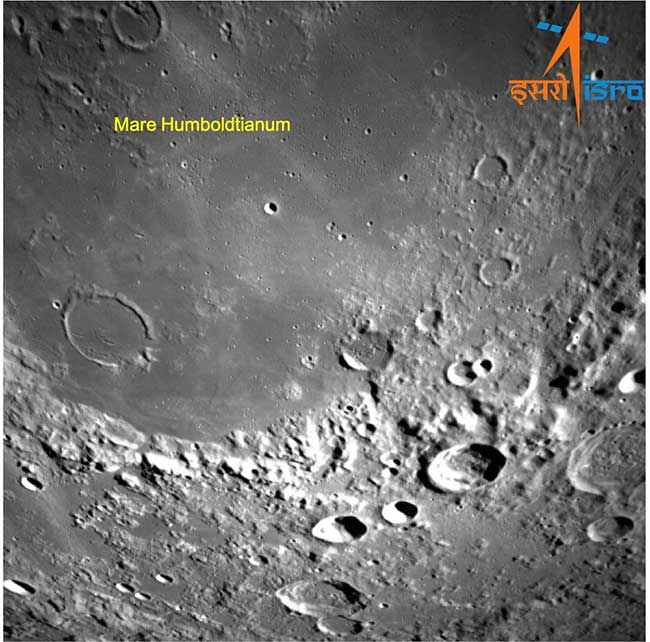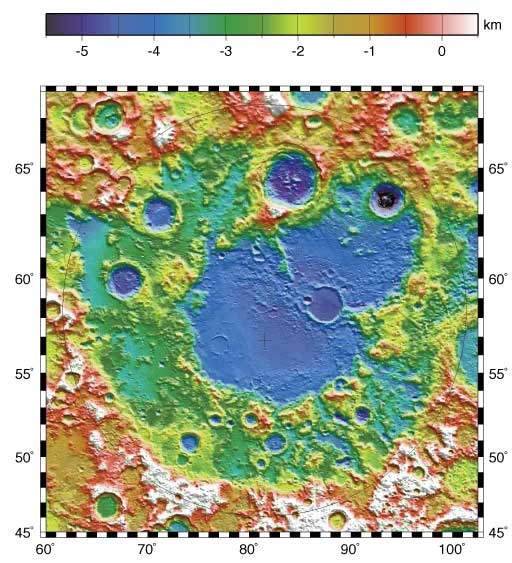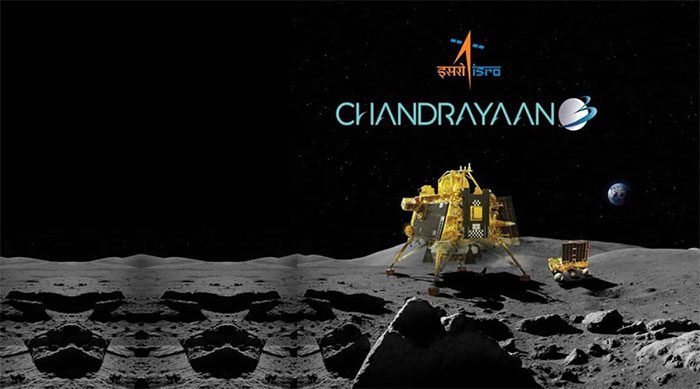India’s Chandrayaan-3 Spacecraft Ready for Historic Landing.
According to Reuters, on August 21, India’s space agency announced images captured by their spacecraft from the far side of the Moon as it heads towards an effort to land in the Moon’s South Pole region, shortly after the failure of Russia’s Luna-25 lander.
The images show the Mare Humboldtianum plain, located in the center of the Humboldtianum basin, along the northeastern edge of the Moon, extending towards the dark side of the natural satellite.
NASA estimates that Mare Humboldtianum formed during the Late Imbrian period, around 3.8 to 3.6 billion years ago. This region is of significant interest to NASA and is one of two lunar plains named after individuals.
Mare Humboldtianum is named after the German explorer Alexander von Humboldt (1769-1859), while Mare Smythii is named after the British astronomer William Henry Smyth (1788-1865).

The far side of the Moon captured by the Lander Hazard Detection and Avoidance Camera (LHDAC) on Chandrayaan-3 on August 19, 2023. (Source: ISRO)

The Humboldtianum basin, home to the Mare Humboldtianum plain. (Photo: NASA/Goddard)
Chandrayaan-3, from the Indian Space Research Organisation (ISRO), is racing against Russia to become the first spacecraft to land on the South Pole of the Moon—a region with shadowed craters believed to contain frozen water that could support future human colonization of the Moon.
Following the news of the failure of Russia’s Luna-25 mission on August 20, ISRO announced that Chandrayaan-3 is on track to land at 18:04 on August 23 (Indian time).
“All systems on the spacecraft are functioning ‘perfectly,’ and no surprises are anticipated on landing day,” ISRO stated.
The Chandrayaan-3 mission [meaning “Moon vehicle” in Hindi and Sanskrit] is India’s second attempt to successfully land a spacecraft on the Moon’s South Pole. In 2019, ISRO’s Chandrayaan-2 mission successfully deployed an orbiter, but its lander failed.
The rugged terrain makes landing in the South Pole challenging, but the first successful landing attempt in this area would be historic. The water ice in the region could provide fuel, oxygen, and drinking water for future missions.
The images released on Monday, August 21, show impact craters on the lunar surface captured by the LHDAC on Chandrayaan-3, designed to help identify a safe landing spot for the spacecraft.
India’s Efforts
This latest lunar mission from India was launched by a rocket on July 14, 2023, and the Chandrayaan-3 lander separated from the propulsion module last week.
For India, a successful Moon landing would mark its emergence as a space power as Prime Minister Narendra Modi seeks to boost investment in private space launches and related satellite-based businesses.
“If Chandrayaan-3 is successful, it will enhance India’s space agency’s reputation worldwide. That achievement will demonstrate that India is becoming a key player in space exploration,” said Manish Purohit, a former ISRO scientist.
A successful mission will also bolster India’s reputation for cost-competitive space engineering. Chandrayaan-3 was launched with a budget of approximately 6.15 billion rupees (74 million USD), less than the budget for the 2013 Hollywood space thriller “Gravity,” according to Reuters.
A successful mission would make India the fourth country to land on the Moon, following the former Soviet Union, the United States, and China.

An illustrative image of Chandrayaan-3 landing on the Moon. (Source: ISRO).
K. Sivan, the former director of India’s space agency, stated after the launch of Chandrayaan-3: “India just deployed a new technology promising a successful landing. It’s truly wonderful.”
ISRO scientists have indicated that they have learned many lessons from the previous lunar mission’s failure and made adjustments to Chandrayaan-3 to enhance the chances of a successful landing, including the ability to safely land anywhere in challenging conditions. Chandrayaan-3 is also equipped with more fuel, additional solar panels, and sturdier legs.
Executives in India’s nascent space industry are also hoping for a boost from these high-profile international events. The number of space startups in India has more than doubled since 2020, when India opened up to private launches.
ISRO has announced that Chandrayaan-3’s Moon landing will be streamed live on the organization’s official website, social media, YouTube, and on television.





















































